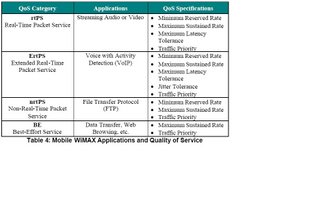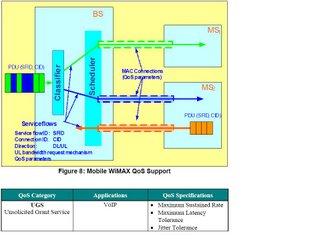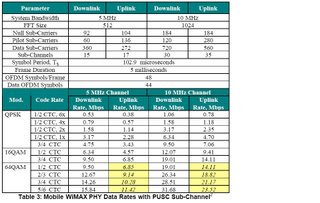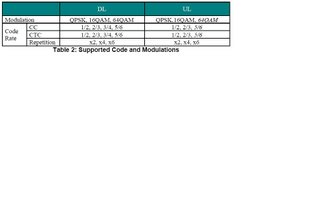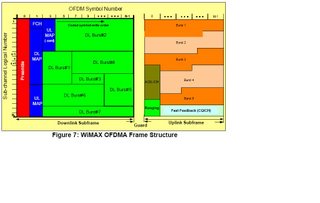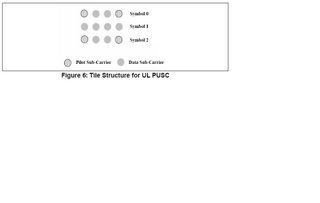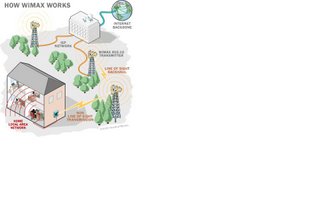Mobile WiMAX – Part 1: A Technical Overview and
Performance Evaluation
This paper has been prepared on behalf of the WiMAX Forum and the material presented
represents the combined efforts of many people from several WiMAX Forum
organizations with long-standing experience in wireless technologies. Additionally, a
broader range of WiMAX Forum members have had the opportunity to review and
critique the material and every attempt has been made to assure accuracy of the material.
WiMAX Forum member organizations that have made contributions to the material
presented in this paper are:
Alvarion
Arraycomm
ATT
Beceem
Intel
Motorola
Nortel
Samsung
The WiMAX Forum is especially grateful to participants from Intel, Motorola, and Nortel
for their dedicated efforts and substantial contributions towards completing this paper in a
timely manner. The overall preparation and editing was done by Doug Gray, a
Telecommunications Consultant under contract to the WiMAX Forum.
Acronyms
3GPP 3G Partnership Project
3GPP2 3G Partnership Project 2
AAS Adaptive Antenna System also Advanced Antenna System
ACK Acknowledge
AES Advanced Encryption Standard
AG Absolute Grant
AMC Adaptive Modulation and Coding
A-MIMO Adaptive Multiple Input Multiple Output (Antenna)
ASM Adaptive MIMO Switching
ARQ Automatic Repeat reQuest
ASN Access Service Network
ASP Application Service Provider
BE Best Effort
BRAN Broadband Radio Access Network
CC Chase Combining (also Convolutional Code)
CCI Co-Channel Interference
CCM Counter with Cipher-block chaining Message authentication code
CDF Cumulative Distribution Function
CDMA Code Division Multiple Access
CINR Carrier to Interference + Noise Ratio
CMAC block Cipher-based Message Authentication Code
CP Cyclic Prefix
CQI Channel Quality Indicator
CSN Connectivity Service Network
CSTD Cyclic Shift Transmit Diversity
CTC Convolutional Turbo Code
DL Downlink
DOCSIS Data Over Cable Service Interface Specification
DSL Digital Subscriber Line
DVB Digital Video Broadcast
EAP Extensible Authentication Protocol
EESM Exponential Effective SIR Mapping
EIRP Effective Isotropic Radiated Power
ErtVR Extended Real-Time Variable Rate
ETSI European Telecommunications Standards Institute
FBSS Fast Base Station Switch
FCH Frame Control Header
FDD Frequency Division Duplex
FFT Fast Fourier Transform
FTP File Transfer Protocol
FUSC Fully Used Sub-Channel
HARQ Hybrid Automatic Repeat reQuest
HHO Hard Hand-Off
HiperMAN High Performance Metropolitan Area Network
HMAC keyed Hash Message Authentication Code
HO Hand-Off
HTTP Hyper Text Transfer Protocol
IE Information Element
IEFT Internet Engineering Task Force
IFFT Inverse Fast Fourier Transform
IR Incremental Redundancy
ISI Inter-Symbol Interference
LDPC Low-Density-Parity-Check
LOS Line of Sight
MAC Media Access Control
MAI Multiple Access Interference
MAN Metropolitan Area Network
MAP Media Access Protocol
MBS Multicast and Broadcast Service
MDHO Macro Diversity Hand Over
MIMO Multiple Input Multiple Output (Antenna)
MMS Multimedia Message Service
MPLS Multi-Protocol Label Switching
MS Mobile Station
MSO Multi-Services Operator
NACK Not Acknowledge
NAP Network Access Provider
NLOS Non Line-of-Sight
NRM Network Reference Model
nrtPS Non-Real-Time Packet Service
NSP Network Service Provider
OFDM Orthogonal Frequency Division Multiplex
OFDMA Orthogonal Frequency Division Multiple Access
PER Packet Error Rate
PF Proportional Fair (Scheduler)
PKM Public Key Management
PUSC Partially Used Sub-Channel
QAM Quadrature Amplitude Modulation
QPSK Quadrature Phase Shift Keying
RG Relative Grant
RR Round Robin (Scheduler)
RRI Reverse Rate Indicator
RTG Receive/transmit Transition Gap
rtPS Real-Time Packet Service
RUIM Removable User Identify Module
SDMA Space (or Spatial) Division (or Diversity) Multiple Access
SF Spreading Factor
SFN Single Frequency Network
SGSN Serving GPRS Support Node
SHO Soft Hand-Off
SIM Subscriber Identify Module
SINR Signal to Interference + Noise Ratio
SISO Single Input Single Output (Antenna)
SLA Service Level Agreement
SM Spatial Multiplexing
SMS Short Message Service
SNIR Signal to Noise + Interference Ratio
SNR Signal to Noise Ratio
S-OFDMA Scalable Orthogonal Frequency Division Multiple Access
SS Subscriber Station
STC Space Time Coding
TDD Time Division Duplex
TEK Traffic Encryption Key
TTG Transmit/receive Transition Gap
TTI Transmission Time Interval
TU Typical Urban (as in channel model)
UE User Equipment
UGS Unsolicited Grant Service
UL Uplink
UMTS Universal Mobile Telephone System
USIM Universal Subscriber Identify Module
VoIP Voice over Internet Protocol
VPN Virtual Private Network
VSF Variable Spreading Factor
WiFi Wireless Fidelity
WAP Wireless Application Protocol
WiBro Wireless Broadband (Service)
WiMAX Worldwide Interoperability for Microwave Access
EXECUTIVE SUMMARY
In this document we provide an overview of Mobile WiMAX and provide the
performance for the basic minimal configuration based on the WiMAX Forum Release-1
system profiles. We show that mobile WiMAX can provide tens of megabits per second
of capacity per channel from each base station with a baseline configuration. Some of the
advanced features such as adaptive antenna systems (AAS) which can significantly
improve the performance are discussed but not included in the performance analysis.
The high data throughput enables efficient data multiplexing and low data latency.
Attributes essential to enable broadband data services including data, streaming video and
VoIP with high quality of service (QoS). The performance will enable transparency of
quality of service between Mobile WiMAX and broadband wired services such as Cable
and DSL, an important requirement for the success of the targeted Mobile Internet
application for Mobile WiMAX.
The scalable architecture, high data throughput and low cost deployment make Mobile
WiMAX a leading solution for wireless broadband services. Other advantages of
WiMAX include an open standards approach, friendly IPR structure and healthy
ecosystem. Hundreds of companies have contributed to the development of the
technology and many companies have announced product plans for this technology. This
addresses another important requirement for the success of the technology, which is low
cost of subscription services for mobile internet. The broad industry participation will
ensure economies of scale that will help drive down the costs of subscription and enable
the deployment of mobile internet services globally, including emerging countries.
A companion paper, Mobile WiMAX - Part II: A Competitive Analysis, provides a
comparison with contemporary cellular alternatives. The comparison is carried out in
qualitative (feature comparison) and quantitative terms to demonstrate the advantages of
Mobile WiMAX compared to the available mobile wireless alternatives.
